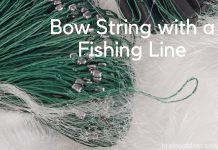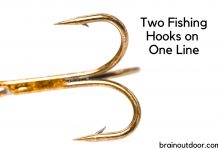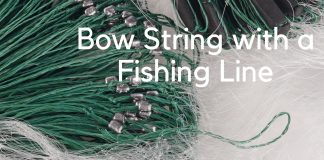Hooks are held together by knots. Therefore, tying a hook will depend on several reasons. Hooks come in different sizes and shapes. Before we look at the different ways on how to tie fishing hook, it’s good to familiarize yourself with terms related to knot tying. How well do you know the meaning of what the guide instructs you to do? Most of these terms, you are sure to across in this article.
Turn
When tying knots to connect something to another one, you may get to do it in a certain number of turns. Other times it can be called wraps. To have a complete turn, you will be required to pass the tag end around the hook or mostly the vertical line.
Tag end
Tag end is the name given to the end of your fishing line
Standing line
It is any line that passes up toward the reel.

Knots Used to Tie the Hook
Anglers use fishing knots when connecting either a line to a hook or a lure. Not all tying knots are for cooks.
1. The Hangman’s knot
It is sometimes called the Uni knot. Pass the fishing line to the hook’s eye as you double it back. Lay the tag end to create a loop on the doubled line. Wrap the tag end eight times around the double line and then pass it through the loop. Lubricate and then pull the tag end to create a tight knot. To adjust the loop, slide it on the hook’s eye if you don’t want a little loop. Trim off the excess line.
2. Palomar knot
The Palomar knot is the strongest knot for securing the line to the hook. With your fishing line in place, create a loop by doubling the line. Insert the created loop into the eye of the hook. Create a loose overhand knot. Gently move the loop through the end of your hook and pull the line. Trim off excess.
3. Improved clinch
This knot is common among anglers; it is for tying the hook to a fish line. It can also be called the Fisherman’s knot. Hold the eye of the hook and pass the fishing line through it. Runabout six inches of line to the other side of the hook’s eye. Double the tag end about seven times against itself. It will create a small hoop when doing this. Take the end of the fishing line and pass it through the tiny loop that you created. You will then want to pass it through the bigger loop. Lubricate with saliva or water and then tighten it against the hooks eye and trim off excess with scissors.
4. Egg loop knot
Thread one end of the line to the eye of the hook. Take one end of the and bend it facing your hook’s back and secure it with your thumb. Take the other end and make about 20 wraps on top of the entire line, starting from the point near the hook’s eye working down the hook. Secure the wraps as well with your thumb. When the leader lime reaches the end, bend it in the opposite direction and make your way back to the hook’s eye. Make around four wraps as you work your way towards the hook’s eye. Lubricate the line and then pull the leader line to tighten. Create a hoop on top of the hook to leave space for your eggs.
5. Knotless knot
A knotless knot is among the easiest go-to when you want to attach the hook to a fishing line.Create a coil at the end of one of the fishing line for your bait. Take the other end and pass it through the hook’s eye, starting from the back coming frontwards. Wrap the tag end eight times along the hook’s shank toward the dominant line. The two lines should align with each other. With the end of the leader line, pass it from the back as you insert it in the hook’s eye. Lubricate and then tighten by pulling the end of the leader line.
6. Drop shot rig
To tie a drop shot rig, pass the line through your hook’s eye to form a loop. Wrap it around the created loop;you will then need to pass it around the hook as you bring it up. Pull the hanging end to tighten the knot. Take one piece of the tag end and pass it through the hook as you pull it out. Let the end pass through the weight as you loop it. Hold the standing part left, lubricate, and then tighten the knot.
Tips For Tying Tight Hooks

When tying a line to a hook, you want it to be as tight as possible without overtightening. The following are ways to ensure your hook stays in place with the knots you make.
Lubricate: Lubricate the knot with saliva, water, or cooking oil before tighten it. This way, the knot is bound to stay in place at all times.
Choose a knot: Choose the right type of knot to help you secure the hook. Most of these knots pass through the hook’s eye. Some knots are for tying a line to a lure rather than a line to a hook. Go with a knot you can easily tie without difficulties.
Trim it off: When you are done connecting the hook, chances are there is an excess of line left. You, therefore, need to trim off with a pair of scissors for a finished look.
Keep practicing: Practice playing around with the methods to see which best ties your hook. It all dawns on personal choice. Remember, you don’t need to get it right on your first shot; keep practicing.
Conclusion
Tying a fishing hook does not need to be hard when following the correct procedure. A well-tied hook will give you a great catch without worrying about it slipping away. Not all knots you come across will tie your hook perfectly. Others only join two lines only. It is always important to be sure you are using the right knot when tying the fishing hook with the line.































